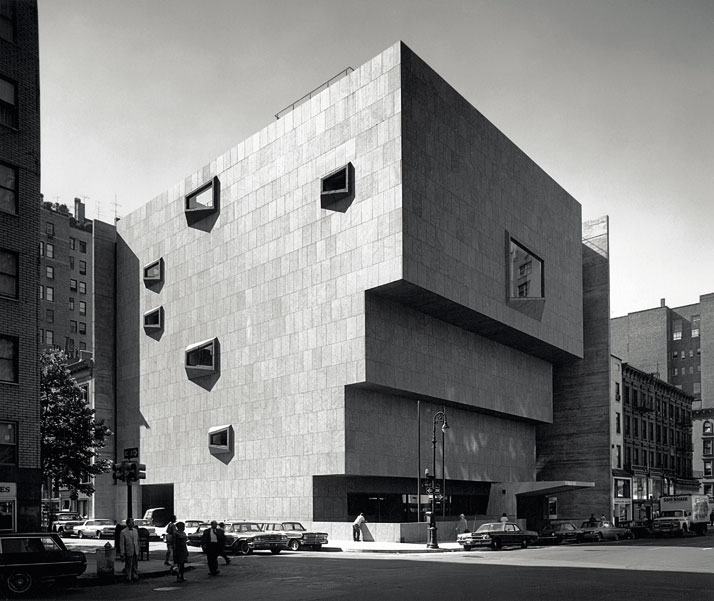Consider for a moment, how The Metropolitan Museum’s extension into the Breuer building is still a topic of discussion over a year later. Art and architectural critics have been examining this move mostly in terms of interpreting The Met’s desires and efforts to expand into the contemporary art and design world. One aspect of this expansion, however, that has been slightly overshadowed, is that the very act of the museum inhabiting an historic symbol of a building, clothing itself in its brutalist shell can deem the Breuer as an exhibit in and of itself. The Architect’s Newspaper briefly touched upon this, after the opening, in an interview with Jorge Otero-Pailos Artist, Architect, and Preservationist. Similarly to Pailos, I believe the building is treated as a work of art, yet not quite as what the article suggests, namely, that it is somewhat of a period room but not entirely so. Instead, I see the Breuer functioning more along the lines of Constantin Brancusi’s famous quote:
“Architecture is inhabited sculpture.”
The Breuer building, named after its original architect Marcel Breuer, is a characteristic specimen of Brutalist architecture of the 1960s. It’s imposing and weighty shell occupies the corner of 75th and Madison Avenue and appears to emerge from below the ground as though a product of the historic grounds of New York City — a densely urban habitat. As such, the Breuer does not just symbolically represent The Metropolitan Museum’s attempts to venture deeper into architecture and contemporary art, but is itself an acquisition to be seen and experienced, much like the works exhibited inside of it. This is highlighted by the fact that the museum’s contract with the building will last for eight years, just like an artwork may be acquired from a collector or other museum for a period of time after which the terms may be revisited.
It is not so necessary to think of The Metropolitan Museum of Art as inhabiting the Breuer or taking on a new identity by moving part of its collection into it. Instead, it could be seen as a new acquisition that can contain other acquisitions. In a case like this, the boundaries between art and architecture are challenged yet again, fueling the age-long debates on whether architecture can be seen and discussed as a work of art or not. Nevertheless, viewing the Breuer as an exhibit creates an open and fertile path to revisit other buildings through a similar lens that can possibly offer new outlooks onto architecture and museums.

Comments are closed.